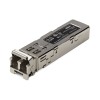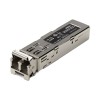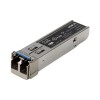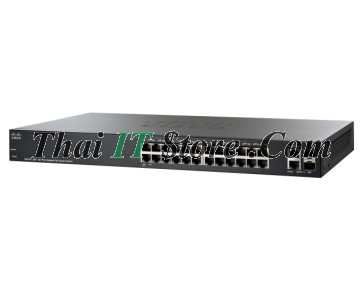- หน้าหลัก
- EOL (สินค้ายกเลิกการผลิต)
- Small Businesses EOL
- 220 Series Smart Switch
- Cisco 220 Smart Switches | SG220-26P-K9-EU SG220-26P 24 Port 10/100/1000 PoE+ 180W, 2x1G SFP/RJ-45


มีบริการอุปกรณ์สำรองระหว่างซ่อมและ Onsite Services ตลอด 24 ชั่วโมง 365 วัน (ข้อมูลเพิ่มเติม คลิก...)
Cisco 220 Smart Switches | SG220-26P-K9-EU SG220-26P 24 Port 10/100/1000 PoE+ 180W, 2x1G SFP/RJ-45
| Band: | Cisco |
| Type: | Switch / Hub |
| Model: | 220 Smart Switches |
| Part Number: | SG220-26P-K9-EU |
| Features: | Managed Switches |
| Detail: | SG220-26P-K9-EU | SG220-26P 24 Port 10/100/1000 PoE+ 180W, 2x1G SFP/RJ-45 |
-
 MGBLH1 SMB SFP 1000BASE, SMF, 40km Distance฿3,540.00 ราคายังไม่รวมภาษีมูลค่าเพิ่ม.เพิ่มไปรายการโปรด
MGBLH1 SMB SFP 1000BASE, SMF, 40km Distance฿3,540.00 ราคายังไม่รวมภาษีมูลค่าเพิ่ม.เพิ่มไปรายการโปรด -
 MGBSX1 SMB SFP 1000BASE, MMF, 500m Distance฿3,590.00 ราคายังไม่รวมภาษีมูลค่าเพิ่ม.เพิ่มไปรายการโปรด
MGBSX1 SMB SFP 1000BASE, MMF, 500m Distance฿3,590.00 ราคายังไม่รวมภาษีมูลค่าเพิ่ม.เพิ่มไปรายการโปรด -
 ยกเลิกการผลิต: MGBLX1 SMB 1000BASE, SMF ใช้ MGBLH1 แทน฿3,020.00 ราคายังไม่รวมภาษีมูลค่าเพิ่ม.เพิ่มไปรายการโปรด
ยกเลิกการผลิต: MGBLX1 SMB 1000BASE, SMF ใช้ MGBLH1 แทน฿3,020.00 ราคายังไม่รวมภาษีมูลค่าเพิ่ม.เพิ่มไปรายการโปรด
เลือกสินค้าที่ต้องการหยิบใส่รถเข็น หรือ เลือกทั้งหมด
บทความที่เกี่ยวข้อง
- Cisco MA แบบ SMB Support (CON-SMBS) คืออะไร
- Engineer Services
- Pre-Sale Services
- Cisco POE ดูยังไงว่าแต่ละ port กินไฟเท่าไร และความหมาย
- ตั้งค่า Cisco switch POE ให้จ่ายไฟ(Watt) ตามที่เรากำหนดเอง
- ดูยังไงว่า Cisco switch POE จ่ายไฟไปแล้วที่เท่าไร
- ใส่ DNS ให้ Cisco SMB switch
- วิธีตั้งค่า Jumbo frame cisco layer2 switch สำหรับ MS Windows
- วิธีทำ Port channel (Ether-Channel, Link-Aggregation) Cisco switch Layer2
- วิธีทำ Trunk Port cisco switch และ Allow VLAN all
- วิธีสร้าง VLAN Cisco และ Access VLAN cisco layer2 switch SMB
- วิธีตั้งค่าหรือเปลี่ยน IP Management cisco switch L2 small business
- วิธีเปิด SSH (Secure Shell) cisco small business
- วิธีเปิด Telnet cisco small business
- วิธี Save Configuration cisco small business switch ผ่านเว็บ
- วิธีเปลี่ยน password cisco SMB switch router access point
- วิธี Restore config (running startup) cisco SBM switch router
- วิธี Backup config (running startup) cisco SMB switch router wifi
- วิธี Restore to Factory Default หรือวิธีคืนค่าโรงงาน ผ่านเว็บ
- วิธี Reboot cisco SMB ผ่าน Web-base management
- วิธีตรวจสอบ Cisco SMB switch firmware version
- วิธีอัพเดท cisco smb firmware
- วิธีเปลี่ยน Password ครั้งแรก cisco web base
- ตั้งค่า COM port เพื่อ Config Cisco
- เครื่องคอมใช้ COM port อะไรตั้งค่า Cisco
- ตั้งค่า Cisco Console (Serial port) สำหรับ Config ด้วย Putty
- วิธี Download Cisco Firmware, IOS
- ติดตั้ง และตั้งค่า TFTP Server สำหรับ Cisco
- Cisco SMB Switches SG220-26P รีวิว
- Cisco SMB Switches Reset Device รีบูทอุปกรณ์
- Cisco SMB Switches Restore Factory Default รีเซ็ท คืนค่าโรงงาน
- Cisco SMB Switches ไฟ LED System กระพริบตลอด
- Cisco SMB Connect Web-based Interface
- การรับประกัน
- การจัดส่ง
- การชำระเงิน
- ขั้นตอนขอเปลี่ยนอุปกรณ์ เพื่อทดแทนอุปกรณ์ที่เสีย (Hardware Replacement)
- ขั้นตอนการสมัคร CCO id
- Cisco SMARTnet vs SMBS
- Cisco DOA Warranty 90 วัน คืออะไร
Product specifications
|
Feature |
Description |
||||||
|
Performance |
|||||||
|
Switching Capacity |
Model name |
Forwarding rate in millions of packets per second (mpps; 64-byte packets) |
Switching capacity in Gigabits per second |
||||
|
SF220-24 |
6.55 |
8.8 |
|||||
|
SF220-24P |
6.55 |
8.8 |
|||||
|
SF220-48 |
10.12 |
13.6 |
|||||
|
SF220-48P |
10.12 |
13.6 |
|||||
|
SG220-26 |
38.69 |
52 |
|||||
|
SG220-26P |
38.69 |
52 |
|||||
|
SG220-50 |
74.40 |
100 |
|||||
|
SG220-50P |
74.40 |
100 |
|||||
|
Layer 2 switching |
|||||||
|
MAC table |
Up to 8,192 MAC addresses |
||||||
|
Spanning Tree Protocol (STP) |
Standard 802.1d Spanning Tree support, enabled by default Fast convergence using 802.1w (Rapid Spanning Tree [RSTP]) Multiple Spanning Tree instances using 802.1s (MSTP) 16 instances are supported |
||||||
|
Port grouping |
Support for IEEE 802.3ad Link Aggregation Control Protocol (LACP) ● Up to 8 groups
● Up to 8 ports per group with 16 candidate ports for each (dynamic) 802.3ad link aggregation
Load balance based on source and destination MAC address, or source and destination MAC/IP |
||||||
|
VLAN |
Support for up to 256 VLANs simultaneously Port-based and 802.1Q tag-based VLANs Management VLAN Guest VLAN |
||||||
|
Auto voice VLAN |
Voice traffic is automatically assigned to a voice-specific VLAN and treated with appropriate levels of QoS |
||||||
|
QinQ VLAN |
VLANs transparently cross a service provider network while isolating traffic among customers |
||||||
|
Generic VLAN Registration Protocol (GVRP) and Generic Attribute Registration Protocol (GARP) |
Protocols for automatically propagating and configuring VLANs in a bridged domain |
||||||
|
Head-Of-Line (HOL) blocking |
HOL blocking prevention |
||||||
|
Jumbo frame |
Frame sizes up to 9216 supported |
||||||
|
Loopback detection |
Loopback detection provides protection against loops by transmitting loop protocol packets out of ports on which loop protection has been enabled. It operates independently of STP. |
||||||
|
Automatic Media-Dependent Interface Crossover (MDIX) |
Automatically adjusts transmit and receive pairs if an incorrect cable type (crossover or straight-through) is installed. |
||||||
|
Security |
|||||||
|
ACLs |
Drop or rate limit based on source and destination MAC, VLAN ID or IP address, protocol, port, Differentiated Services Code Point (DSCP)/IP precedence, TCP/UDP source and destination ports, 802.1p priority, Ethernet type, Internet Control Message Protocol (ICMP) packets, IGMP packets, TCP flag Support up to 512 rules |
||||||
|
Port security |
Creates the ability to lock source MAC addresses to ports; limits the number of learned MAC addresses |
||||||
|
IEEE 802.1X (authenticator role) |
802.1X: RADIUS authentication; guest VLAN; Single-host, multiple-host, and multisession mode |
||||||
|
RADIUS, TACACS+ |
Supports RADIUS and TACACS authentication; switch functions as a client |
||||||
|
MAC address filtering |
Supported |
||||||
|
Storm control |
Broadcast, multicast, and unknown unicast |
||||||
|
DoS protection |
DOS attack prevention |
||||||
|
STP Bridge Protocol Data Unit (BPDU) Guard |
This security mechanism protects the network from invalid configurations. A port enabled for BPDU Guard is shut down if a BPDU message is received on that port |
||||||
|
Spanning Tree Loop Guard |
This feature provides additional protection against Layer 2 forwarding loops (STP loops). |
||||||
|
Secure Shell (SSH) Protocol |
SSH is a secure replacement for Telnet traffic. SCP also uses SSH. SSH v1 and v2 are supported |
||||||
|
Secure Sockets Layer (SSL) |
SSL support: Encrypts all HTTPS traffic, allowing highly secure access to the browser-based management GUI in the switch |
||||||
|
QoS |
|||||||
|
Priority levels |
8 hardware queues per port |
||||||
|
Scheduling |
Strict priority and Weighted Round-Robin (WRR) queue assignment based on DSCP and class of service (802.1p/CoS) |
||||||
|
Class of service |
Port-based; 802.1p VLAN priority-based; IPv4/v6 IP precedence, Type of Service (ToS), and DSCP-based; Differentiated Services (DiffServ); classification and re-marking ACLs, trusted QoS |
||||||
|
Rate limiting |
Ingress policer; egress shaping and rate control; per VLAN, per port, and flow-based |
||||||
|
Congestion avoidance |
A TCP congestion avoidance algorithm is required to reduce and prevent global TCP loss synchronization |
||||||
|
Multicast |
|||||||
|
Internet Group Management Protocol (IGMP) Versions 1, 2, and 3 Snooping |
IGMP limits bandwidth-intensive multicast traffic to only the requesters; supports 256 multicast groups |
||||||
|
IGMP querier |
IGMP querier is used to support a Layer 2 multicast domain of snooping switches in the absence of a multicast router |
||||||
|
Standards |
|||||||
|
Standards |
IEEE 802.3 10BASE-T Ethernet, IEEE 802.3u 100BASE-TX Fast Ethernet, IEEE 802.3ab 1000BASE-T Gigabit Ethernet, IEEE 802.3ad LACP, IEEE 802.3z Gigabit Ethernet, IEEE 802.3x Flow Control, IEEE 802.1D (STP, GARP, and GVRP), IEEE 802.1Q/p VLAN, IEEE 802.1w RSTP, IEEE 802.1s Multiple STP, IEEE 802.1X Port Access Authentication, IEEE 802.3af, IEEE 802.3at, RFC 768, RFC 783, RFC 791, RFC 792, RFC 793, RFC 813, RFC 879, RFC 896, RFC 826, RFC 854, RFC 855, RFC 856, RFC 858, RFC 894, RFC 919, RFC 922, RFC 920, RFC 950, RFC 1042, RFC 1071, RFC 1123, RFC 1141, RFC 1155, RFC 1157, RFC 1350, RFC 1533, RFC 1541, RFC 1624, RFC 1700, RFC 1867, RFC 2030, RFC 2616, RFC 2131, RFC 2132, RFC 3164, RFC 3411, RFC 3412, RFC 3413, RFC 3414, RFC 3415, RFC 2576, RFC 4330, RFC 1213, RFC 1215, RFC 1286, RFC 1442, RFC 1451, RFC 1493, RFC 1573, RFC 1643, RFC 1757, RFC 1907, RFC 2011, RFC 2012, RFC 2013, RFC 2233, RFC 2618, RFC 2665, RFC 2666, RFC 2674, RFC 2737, RFC 2819, RFC 2863, RFC 1157, RFC 1493, RFC 1215, RFC 3416 |
||||||
|
IPv6 |
|||||||
|
IPv6 |
IPv6 host mode IPv6 over Ethernet IPv6/IPv4 Dual Stack IPv6 neighbor and router discovery (ND) IPv6 stateless address auto-configuration Path Maximum Transmission Unit (MTU) discovery Duplicate Address Detection (DAD) ICMP version 6 |
||||||
|
IPv6 ACL |
Drop or rate limit IPv6 packets in hardware |
||||||
|
IPv6 QoS |
Prioritize IPv6 packets in hardware |
||||||
|
Multicast Listener Discovery (MLD v1/2) Snooping |
Deliver IPv6 multicast packets only to the required receivers |
||||||
|
IPv6 applications |
Web/SSL, Telnet server/SSH, DHCP Client, DHCP Autoconfig, CDP, LLDP |
||||||
|
IPv6 RFCs supported |
RFC 4443 (which obsoletes RFC2463) - ICMP version 6 RFC 4291 (which obsoletes RFC 3513) - IPv6 address architecture RFC 4291 - IPv6 addressing architecture RFC 2460 - IPv6 specification RFC 4861 (which obsoletes RFC 2461) - Neighbor discovery for IPv6 RFC 4862 (which obsoletes RFC 2462) - IPv6 stateless address auto-configuration RFC 1981 - Path MTU discovery RFC 4007 - IPv6 scoped address architecture RFC 3484 - Default address selection mechanism |
||||||
|
Management |
|
||||||
|
Web user interface |
Built-in switch configuration utility for easy browser-based device configuration (HTTP/HTTPS). Supports configuration, system dashboard, system maintenance, and monitoring |
|
|||||
|
Text-editable config files |
Config files can be edited with a text editor and downloaded to another switch, facilitating easier mass deployment |
|
|||||
|
Command-line interface |
Scriptable CLI; a full CLI is supported. User privilege levels 1 and 15 are supported for the CLI |
|
|||||
|
Cloud services |
Support for Cisco FindIT Network Manager |
|
|||||
|
SNMP |
SNMP versions 1, 2c, and 3 with support for traps, and SNMP version 3 User-based Security Model (USM) |
|
|||||
|
Standard MIBs |
MIB-II (RFC1213) IF-MIB (RFC2863) Bridge-MIB (RFC4188) Bridge-MIB-Extension (RFC2674) RMON (RFC2819) Etherlike MIB (RFC3635) Radius Client MIB (RFC2618) Entity MIB (RFC2737) POWER-ETHERNET-MIB (RFC3621) Syslog MIB (RFC3164) |
Generic Traps MIB (RFC1215) SNMP-COMMUNITY-MIB SNMP-MIB LLDP-MIB LLDP-EXT-MED-MIB IEEE8023-LAG-MIB CISCO-PORT-SECURITY-MIB CISCO-ENVMON-MIB CISCO-CDP-MIB CISCO-CONFIG-COPY-MIB |
|
||||
|
Remote Monitoring (RMON) |
Embedded RMON software agent supports 4 RMON groups (history, statistics, alarms, and events) for enhanced traffic management, monitoring, and analysis |
|
|||||
|
IPv4 and IPv6 dual stack |
Coexistence of both protocol stacks to ease migration |
|
|||||
|
Port mirroring |
Traffic on a port or VLAN can be mirrored to another port for analysis with a network analyzer or RMON probe. Up to 8 source ports can be mirrored to one destination port. Four sessions are supported. |
|
|||||
|
Firmware upgrade |
● Web browser upgrade (HTTP/HTTPS) and Trivial File Transfer Protocol (TFTP)
● Dual images for resilient firmware upgrades
|
|
|||||
|
DHCP (Option 12, 66, 67, 82, 129, and 150) |
DHCP options facilitate tighter control from a central point (DHCP server) to obtain IP address, auto-configuration (with configuration file download), DHCP relay, and hostname |
|
|||||
|
Time synchronization |
Simple Network Time Protocol (SNTP) |
|
|||||
|
Login banner |
Configurable multiple banners for web as well as CLI |
|
|||||
|
Other management |
HTTP/HTTPS; TFTP upgrade; DHCP client; BOOTP; cable diagnostics; ping; traceroute; syslog |
|
|||||
|
Discovery |
|||||||
|
Bonjour |
The switch advertises itself using the Bonjour protocol |
||||||
|
Link Layer Discovery Protocol (LLDP) (802.1ab) with LLDP-MED Extensions |
LLDP allows the switch to advertise its identification, configuration, and capabilities to neighboring devices that store the data in a MIB. LLDP-MED is an enhancement to LLDP that adds the extensions needed for IP phones. |
||||||
|
Cisco Discovery Protocol |
The switch advertises itself using the Cisco Discovery Protocol. Display brief information for connected Cisco network devices, IP phones, and wireless access points |
||||||
|
Minimum requirements |
|||||||
|
Web configuration |
Browser: Internet Explorer 8 or later; Mozilla Firefox 20 or later; Google Chrome 23 or later; Safari 5.1 or later |
||||||
|
Power efficiency |
|||||||
|
EEE compliance (802.3az) |
Support 802.3az Energy Efficient Ethernet on all ports; substantially reduce the power consumption when link bandwidth is not at full utilization |
||||||
|
Energy Detect |
Automatically turns power off on Gigabit Ethernet and 10/100 RJ-45 ports when detecting a link down Active mode is resumed without loss of any packets when the switch detects the link up |
||||||
|
Disable port LEDs |
LEDs can be manually turned off to save on energy |
||||||
|
Time-based PoE |
PoE power can be on or off based on user-defined schedule to save energy |
||||||
|
Time-based port operation |
Link up or down based on user-defined schedule (when the port is administratively up) |
||||||
|
Power over Ethernet |
|||||||
|
802.3af PoE or 802.3at PoE+ delivered over any of the RJ-45 network ports within the listed power budgets |
Switches support 802.3af, 802.3at, and Cisco pre-standard (legacy) PoE with maximum power of 30 W per port. This applies to the following PoE-enabled models; the maximum number of ports providing PoE power simultaneously is determined by the total PoE budget for the switch listed as below: |
||||||
|
Model Name |
PoE Power Budget |
Number of Ports That Support PoE |
|||||
|
SF220-24P |
180 W |
24 |
|||||
|
SF220-48P |
375 W |
48 |
|||||
|
SG220-26P |
180 W |
24 |
|||||
|
SG220-50P |
375 W |
48 |
|||||
|
Pre-standard PoE |
Support Cisco Pre-Standard PoE |
||||||
|
Intelligent PoE power management |
Support the granular power negotiation with CDP/LLDP communication with PD devices after IEEE classification |
||||||
Hardware specifications
|
Feature |
Description |
||||||||||||
|
Hardware |
|||||||||||||
|
Buttons |
Reset button |
||||||||||||
|
Cabling type |
Unshielded Twisted Pair (UTP) Category 5 or better for 10BASE-T/100BASE-TX; UTP Category 5 Ethernet or better for 1000BASE-T |
||||||||||||
|
LEDs |
System, Link/Act, Speed |
||||||||||||
|
Flash |
32 MB |
||||||||||||
|
CPU memory |
128 MB |
||||||||||||
|
Ports |
Model name |
Total system ports |
RJ-45 ports |
Uplink ports |
|||||||||
|
SF220-24 |
24 Fast Ethernet plus 2 Gigabit Ethernet |
24 Fast Ethernet |
2 Gigabit Ethernet combo |
||||||||||
|
SF220-24P |
24 Fast Ethernet plus 2 Gigabit Ethernet |
24 Fast Ethernet |
2 Gigabit Ethernet combo |
||||||||||
|
SF220-48 |
48 Fast Ethernet plus 2 Gigabit Ethernet |
48 Fast Ethernet |
2 Gigabit Ethernet combo |
||||||||||
|
SF220-48P |
48 Fast Ethernet plus 2 Gigabit Ethernet |
48 Fast Ethernet |
2 Gigabit Ethernet combo |
||||||||||
|
SG220-26 |
26 Gigabit Ethernet |
24 Gigabit Ethernet |
2 Gigabit Ethernet combo |
||||||||||
|
SG220-26P |
26 Gigabit Ethernet |
24 Gigabit Ethernet |
2 Gigabit Ethernet combo |
||||||||||
|
SG220-50 |
50 Gigabit Ethernet |
48 Gigabit Ethernet |
2 Gigabit Ethernet combo |
||||||||||
|
SG220-50P |
50 Gigabit Ethernet |
48 Gigabit Ethernet |
2 Gigabit Ethernet combo |
||||||||||
|
Packet Buffer |
All numbers are aggregate across all ports as the buffers are dynamically shared |
||||||||||||
|
Model name |
Packet buffer |
||||||||||||
|
SF220-24 |
4.1 Mb |
||||||||||||
|
SF220-24P |
4.1 Mb |
||||||||||||
|
SF220-48 |
12 Mb |
||||||||||||
|
SF220-48P |
12 Mb |
||||||||||||
|
SG220-26 |
4.1 Mb |
||||||||||||
|
SG220-26P |
4.1 Mb |
||||||||||||
|
SG220-50 |
12 Mb |
||||||||||||
|
SG220-50P |
12 Mb |
||||||||||||
|
Certifications |
UL (UL 60950), CSA (CSA 22.2), CE mark, FCC Part 15 (CFR 47) Class A, C-tick |
||||||||||||
|
Operating temperature |
0-50° C |
||||||||||||
|
Storage temperature |
-20° C to +70° C |
||||||||||||
|
Operating humidity |
10% to 90%, relative, noncondensing |
||||||||||||
|
Storage humidity |
10% to 90%, relative, noncondensing |
||||||||||||
|
Warranty |
|||||||||||||
|
Warranty term |
Limited lifetime hardware warranty |
||||||||||||
|
Package contents |
|||||||||||||
|
Package contents |
● Cisco 220 Series Ethernet switch
● Power cord
● Mounting kit included in all SKUs
● Console cable
● Quick start guide
|
||||||||||||
| ประเภท | Switch / Hub |
|---|---|
| Model | 220 Smart Switches |
| Switch Type | Small Business Switches |
| Switch Layer | 2 |
| License / Features | Managed Switches |
| 10/100 Ethernet Down-link Ports | ไม่ |
| 10/100/1000 Ethernet Down-link Ports | ไม่ |
| SFP 10/100 Down-Links | ไม่ |
| SFP 1G Down-Links | ไม่ |
| SFP+ Down-Links | ไม่ |
| SFP / SFP+ Down-Links | ไม่ |
| Uplink Interfaces | ไม่ใช่ |
| Switching capacity | ไม่ |
| Redundant Power Supply | ไม่ |
| Stack | ไม่ |
| Stacking Bandwidth | ไม่ |
| PoE Support | ไม่ |
| Available PoE Power | ไม่ |
| PoE+ 30W (IEEE 802.3at) Ports | ไม่ |
| PoE 15.4W (IEEE 802.3af) Ports | ไม่ |





